![]()
Tue, Dec 18, 2012 | terrorism-info.org.il
Appendix I — Hezbollah’s Terrorist Activity, 2000-2012
Hezbollah has a 30-year history of terrorist activity in Lebanon, the Middle East and around the globe, directed against Israel, the Jewish people, the United States and the West, pro-Western Arab states and Hezbollah’s enemies in Lebanon. This study is published by The Meir Amit Intelligence and Terrorism Information Center. You can download the full study in PDF format here.
Overview
In May 2000 the IDF withdrew from Lebanon and deployed along the international border (according to a demarcation drawn by the UN called the Blue Line). Nevertheless, Hezbollah continued sporadically attacking the IDF through the Lebanese border on the pretext that the IDF still had a presence in the Shebaa Farms (on the Syrian-Lebanese border). At the same time, with Syrian and Iranian support, Hezbollah began upgrading its military infrastructure with an emphasis on a large rocket arsenal, with an eye to future attacks on Israeli civilians. Despite the fact that the IDF had fully complied with UN Security Council Resolution 425 calling for its withdrawal from Lebanon, and the recognition of the international community thereof, Hezbollah remained jihadist and in essence an Iranian proxy. Its terrorist activities in Lebanon came to a head in 2006 when it miscalculated, attacked an IDF patrol near the border and abducted two Israeli soldiers, which led to the outbreak of the Second Lebanon War.
During the past decade Hezbollah has focused on using rocket fire to attack Israeli civilians and the Israeli civilian infrastructure. During the Second Lebanon War (2006) the Israeli civilian front was repeatedly attacked by indiscriminate rocket fire, a war crime according to international law. After the war, with the support of Iran and Syria, Hezbollah’s rocket arsenal was replenished, increased and upgraded, and now stands at an estimated 60,000 artillery rockets and missiles which form a palpable threat to the Israeli civilian population. The upgrading of Hezbollah’s rocket arsenal was manifested by, among other things, the provision by Syria of precise, long-range missiles[18] to Hezbollah (which claims it has a “basket of targets,”including economic civilian targets, and can strike Israel with a “second blow” using a small number of precise missiles).
The desire to harm the Israeli civilian population was also manifested by Hezbollah’s support for the terrorist campaign of the Palestinian terrorist organizations, part of an overall Iranian strategy. Thus Hezbollah sent aid to the terrorist organizations during the second intifada (2000-2005) and during the past six years of Hamas rule of the Gaza Strip. In recent years Hezbollah has become integrated into Iran’s global terrorist campaign, whose first success was the attack on the Israeli tourist bus in Bulgaria (2012). In addition, a Hezbollah network was exposed in Egypt (2008) which was planning to attack Egyptian tourist sites popular with Israelis.
Hezbollah, directed by the Qods Force, gave support in training and advice to the Shi’ite militias in Iraq in the war against the United States and its allies (2006-2011). This past year Hezbollah has been integrated into Iran’s effort to prevent the collapse of the Assad regime in Syria, the strategic ally of Iran and Hezbollah, and an important member of the “resistance camp.”
The Lebanese Arena
Building Hezbollah’s Rocket Arsenal after the IDF Left the Security Zone in South Lebanon (2000-2006)
Even after the IDF withdrew from the security zone in south Lebanon in May 2000 and deployed along the international border (the Blue Line), Hezbollah did not stop attacking Israel from south Lebanon. In addition, during the six years between the First and Second Lebanon Wars, Iran and Syria upgraded Hezbollah’s rocket and missile arsenal with an eye to the next round of attacks on the Israeli civilian population. Hezbollah received from Iran and Syria an enormous quantity of highquality rockets manufactured in those countries as well as in Russia and China. On the eve of the Second Lebanon War Hezbollah had more than 20,000 rockets with ranges long enough to allow them to attack the greater Tel Aviv area and the northern Negev.
The artillery rockets in Hezbollah’s arsenal on the eve of the Second Lebanon War did not have precision guidance systems and their level of accuracy was low. They could be used only to attack large targets, such as cities and towns, with the avowed objective of killing and wounding as many Israeli civilians as possible. In addition, some of the rockets launched in the Second Lebanon War were filled with ball bearings and caused serious injuries by virtue of their scattering. The use of rockets aimed to kill civilians, strew fear and demoralize the civilian population violates the rules of engagement of international law and is a war crime.
In the period preceding the Second Lebanon War Hassan Nasrallah made no attempt to hide his intention to use the large rocket arsenal Hezbollah was amassing to attack civilian targets in Israel (“occupied Palestine”). He said the following:
“I said recently in Bint Jbeil[19] that the resistance [i.e., Hezbollah] had more than 12,000 rockets…a large, important, respectable rocket force and a source of pride. Thus I can say that all of northern occupied Palestine is within range of the rockets of the resistance. Naturally, that is the minimum. Regarding what is further away…that will remain a secret [a hint that Hezbollah had rockets which could reach the center of Israel]. The north [of Israel] is within range of the resistance’s rockets: its ports, its [military] bases, its factories, everything [i.e., Nasrallah made no distinction between civilian and military targets]. That creates a balance between northern Palestine and south Lebanon, and all Lebanon…It is sufficient that [Hezbollah and Lebanon] have the capability to destroy important, very sensitive targets in northern occupied Palestine…If I appear on TV today I will tell the residents of the settlements in northern occupied Palestine,[20] in the name of Hezbollah, that I recommend you go into your shelters for a couple of hours. [As a result] everyone will [soon] be in Tel Aviv… (Al-Manar TV, Lebanon, May 27, 2006).
Using Hezbollah’s Rocket Arsenal to Attack Civilian Targets in Israel during the Second Lebanon War
The Hezbollah Attack that Led to the Second Lebanon War
In the Second Lebanon War Hezbollah carried out its plan for methodical rocket fire attacks on Israeli population centers. Initially rockets targeted the northern cities of Nahariya, Safed, Carmiel and Kiryat Shemonah. Hezbollah then extended its attacks in an arc which extended deep into northern Israel, attacking Haifa and its suburbs, Afula and Nazareth Illit, as well as Carmiel and Safed. As its final barrage, Hezbollah sprayed rockets at Kiryat Shemonah, Haifa, Afula, Ramat Yishai, Beit Shean and the towns and villages near the Lebanese border. During the war Tel Aviv was not attacked, but after it ended Nasrallah threatened that in the next war he would attack Tel Aviv. During the Second Lebanon War Hezbollah fired close to 4,000 rockets of various types at Israel population centers.
During the Second Lebanon War Hassan Nasrallah reiterated that Israeli population centers were the prime target for his organization’s rocket fire. His speeches consistently bragged about the rockets Hezbollah was firing at the population centers of northern Israel. He also repeated the threat that Hezbollah’s rockets could reach large cities in the center of Israel (“further away than Haifa), i.e. the greater Tel Aviv area. Hezbollah’s media looped slides of Israel’s cities, town, villages and civilian infrastructures considered Hezbollah targets.[21]
Hezbollah’s rocket fire killed 53 Israelis, one third of the total Israelis 159 killed in the war. Forty-one were civilians and 12 were soldiers (killed by an chance hit from rocket which landed at the entrance to the village of Kfar Giladi). Most of the victims lived in the cities, especially Haifa (13 civilians killed). Five civilians were killed in Acre, three in Maalot Tarshiha, two in Nahariya, two in Nazareth and one in Safed. In the smaller villages, three were killed in Arab al-Aramshe, three in Majd al-Krum, and two each in Meiron, Maghar and Dir al-Assad.[22]
Hezbollah’s rocket fire caused severe damage to the civilian infrastructure of the State of Israel. According to the assessments of the relevant Israeli government agencies, during the war 12,000 buildings were damaged, 400 of them public buildings. It is estimated that 2,000 homes/apartments were completely destroyed.[23] Six medical facilities were damaged, as were 23 schools, four kindergartens, two community centers and a great many places of business. More than 50 kilometers, about 30 miles, of roads were destroyed, and a sewage treatment plant in Safed took a direct hit. The extensive damage to civilian structures and medical and community facilities is incontrovertible proof that Hezbollah indiscriminately and deliberately attacked the Israeli civilian population.
Rocket Hits on Residences
Upgrading Hezbollah’s Rocket Arsenal after the Second Lebanon War (2006-2012)
Since the Second Lebanon War Iran and Syria has continuously replenished, increased and upgraded Hezbollah’s rocket arsenal, with regard to both quality and quantity. As of the summer of 2012 Hezbollah had an estimated 60,000 rockets and missiles with short, medium and long ranges (of them more than 40,000 rockets with ranges of up to 43 kilometers or 26.7 miles), three times what it had during the Second Lebanon War. Hezbollah has other weapons which can be used to strike civilian population centers, including C-802 shore-to-ship missiles, which were used during the Second Lebanon War, and Ababil UAVs.
Hezbollah’s upgraded rocket arsenal threatens the Israel’s entire population, north, central and south (of Beersheba). It can potentially cause more substantial damage to the Israeli civilian front through continuous, precise rocket attacks carried out through an extended period of fighting than was possible during the Second Lebanon War. In Hezbollah’s arsenal there are, among others, long-range Syrian-and Iranian-manufactured missiles, Iranian-manufactured 122mm rockets with a range of between 20 and 40 kilometers, Iranian-manufactured Fajr-3 and Fajr-5 rockets with a range of between 43 and 75 kilometers, 240mm flak rockets with a range of 10 kilometers, Iranian-manufactured Fatah 110 rockets with a range of 250 kilometers, Iranian-manufactured Zelzal rockets with a range of 250 kilometers, and Syrian-manufactured 302mm rockets with a range of between 110 and 115 kilometers.
At the end of Operation Pillar of Defense Hassan Nasrallah gave a speech stressing the claim that the rockets in Hezbollah’s arsenal could reach anywhere in the State of Israel. “If Israel was shocked by the number of Fajr-5 rockets which hit Tel Aviv,” he said, “how will it be able to bear the thousands of rockets which will rain on Tel Aviv and other places if it invades Lebanon? The campaign with Gaza was within a 40 to 70 kilometer range, [but] the campaign with us will be within the range of all occupied Palestine, from the Lebanese border to the border with Jordan, from Kiryat Shemonah to Eilat” (Note: Nasrallah gave the names of the cities in Hebrew to make his point clear) (Al-Manar TV, Lebanon, November 25, 2012).
Map of the Range of Hezbollah’s Rockets
Hezbollah’s Precise Long-Range Missiles
The upgrade in quality of Hezbollah’s post-Second Lebanon War missile arsenal includes the addition of precise long-range missiles. They have the capability to pinpoint targets deep within Israel, as claimed by Hezbollah leader Hassan Nasrallah.
Appearing before the Israeli Parliament Foreign Affairs and Defense Committee on May 4, 2010, Major General Yossi Baidatz, former commander of the Analysis and Production Division of IDF Military Intelligence, was asked about reports of the delivery of Scud missiles from Syria to Hezbollah. He said that long range Scud missiles had in fact “recently been delivered to Hezbollah from Syria, and that it was only the tip of the iceberg.” He said that “even today Hezbollah has an arsenal of rockets of every kind and every range, including missiles using solid fuel which had longer ranges and are more precise.” That meant, he said, that “the long ranges of the missiles possessed by Hezbollah make it possible for him to locate their launchers deep within Lebanese territory and that they have ranges greater than anything Israel has known in the past. Hezbollah of 2010 is a different model from Hezbollah of 20120 when it comes to its military capabilities, which have been greatly developed.”[24]
The same information was given public confirmation in a speech by Hassan Nasrallah in the summer of 2012, who again boasted of the ability of Hezbollah’s precise missiles to attack Israeli civilians and the Israeli infrastructure:
- In a speech given for the Iranian-initiated annual Jerusalem Day, Hassan Nasrallah boasted that Hezbollah had “precise missiles, a small number of which can hit pinpoint targets.” He added that Hezbollah had a number of missiles which could strike precisely at a large number of targets in Israel and that Hezbollah had their coordinates. Striking those targets, he said would “turn the lives of thousands of Zionists into a living hell.” He said he meant tens of thousands of dead Israeli civilians, not 300 or 400 or 500 (Al-Manar TV, Lebanon, August 17, 2012).
- Asked by Al-Mayadin TV what he meant when he said he could turn the lives of hundreds of thousands of Israelis into a living hell, Nasrallah answered that in the next war Israel would not be able to strike a fatal blow to Hezbollah’s arsenal. That was because even after the first blow delivered by Israel, Hezbollah would still have “a few missiles” which “could turn the lives of hundreds of thousands of Israelis into a living hell.” He said Hezbollah had a basket of civilian, economic and industrial targets including power plants and nuclear targets. “[The Israelis] have power plants in the center [of the country], which, if attacked, will not only leave [the population] in darkness, but will severely influence the economy.” He said that “every target in the length and width of occupied Palestine… can be hit by the rockets of the resistance” (Al-Mayadin TV, September 3, 2012).
Smuggling Weapons into Lebanon
Weapons, including rockets and missiles, for Hezbollah are smuggled from Iran into Lebanon by sea, by air and overland, and Syria plays a vital logistic role. In most cases the weapons are delivered to Syria, where they are stored for Hezbollah. From Syria they are smuggled to various locations in Lebanon: the Beqaa Valley, greater Beirut and south Lebanon. The smuggling activity is carried out as a collaboration between the Syrian army and the Iranian Islamic Revolutionary Guards.
Exposure of an Attempt to Smuggle Weapons to Hezbollah aboard the Francop (Prevented by the IDF on November 3, 2009)
Employing Terrorism and Violence against Hezbollah’s Political Opposition in Lebanon
Operating in internal Lebanese politics, Hezbollah uses a variety of methods to weaken its own and Syria’s opponents (especially the March 14 Camp) and to reinforce its hold on various government institutions. It makes political deals with its allies (those belonging to the March 8 Camp), exerts military force against its opponents in times of crisis,[25] and appoints its supporters to key positions in various administration agencies (such as internal security, Lebanese army intelligence and inspection and oversight of the Beirut airport). Hezbollah’s infiltration of government agencies accelerated during the past two years as part of Hezbollah’s preparations for reinforcing its control of government agencies in case Bashar Assad’s regime is overthrown, an event which might harm Hezbollah’s status inside Lebanon.
One method used by Hezbollah against its opponents in Lebanon is personal terrorism. The most prominent example in the last decade was the assassination of Lebanese Prime Minister Rafiq Hariri in February 2005. Even after the assassination, of which Hezbollah was accused by the UN Special Tribunal for Lebanon, Hezbollah continued the attempted assassinations of its Lebanese opponents. Its objective has been to increase it political influence after the Syrian forces withdrew from Lebanon, to deter its opponents lest they cross Hezbollah’s red lines (one of which is attempting to damage the so-called “weapon of resistance”) and to prepare themselves for the consequences of the weakening of the Assad regime or its possible collapse. Hezbollah was accused of being behind the assassination of Christian leader Pierre Gemayel in November 2006, the attempted assassination of Christian leader Samir Jaja in April 2012, and the assassination of Christian parliamentarian Boutros Harb in June 2012.
In recent months, with a civil war raging in Syria in the background, the Syrian regime and Hezbollah have become more daring in their intervention in internal Lebanese affairs and have employed violence against their opponents. Two incidents which raised a storm of protests in Lebanon were the following:
- On August 10, 2012, Michel Samaha, former Lebanese minister of information and close to the Syrian regime, was detained on suspicion of transporting arms from Syria to Lebanon. The weapons were intended for use against the political and religious leaders of the March 14 Camp who opposed Syria and Hezbollah and to foment sectarian strife. Also involved in the affair were senior Syrian army officers (the open media and the UN secretary general’s report on the implementation of Resolution 1559 mentioned General Ali Mamlouk and Colonel Ali Adnan). The detention of Michel Samaha provoked an intense Lebanese public discourse regarding the issue of political violence and Hezbollah’s central role in it.
- On October 19, 2012, Brigadier General Wissam al-Hassan was assassinated. Al-Hassan was a Sunni from northern Lebanon and was chief of the information branch of Lebanon’s internal security force. A car bomb containing 70 kilos, or 154 lbs, of explosives was detonated in the Al-Ashrafiya neighborhood of eastern Beirut. The blast killed three people and wounded more than 100. Wissam al-Hassan, who had been affiliated with the March 14 Camp (the opponents of Hezbollah and Syria), was considered by Syria as a Hezbollah rival and close to the Hariri family. He had played a central role in the investigation which exposed Hezbollah’s involvement in the assassination of Prime Minister Rafiq Hariri. In recent months he had succeeded in preventing the Syrian regime from carrying out terrorist attacks in Lebanon from stoking the fires of sectarian confrontations [such as the Michel Samaha affair]. The opposition camp in Lebanon accused Syria of the assassination of Wissam al-Hassan and in several instances, accused Hezbollah as well.[26]
Since its founding, Hezbollah’s personal terrorism against its opponents in Lebanon has almost never been legally proved. That is because the Lebanese legal system is subject to pressures which in most cases make it impossible for it to function independently and to bring to trial murderers who enjoy governmental backing (from Syria and Iran), or the backing of powerful terrorist organizations like Hezbollah.[27] Therefore, an international tribunal was appointed to try the four Hezbollah operatives accused of Rafiq Hariri’s assassination. One of them was Mustafa Badr al-Din, a senior Hezbollah operative and responsible for the organization’s operational networks. The tribunal is expected to meet in March 2013.
The Israeli Arena
Overview
For the past ten years Hezbollah has been conducting intelligence and terrorist activities in Israeli territory. The intelligence, collected in a variety of ways, is intended for use in the support of terrorist attacks, to establish covert networks of Israeli Arabs and to encourage them to carry out terrorist attacks inside Israel. As is its custom, Hezbollah employs criminal elements, both Lebanese and Israeli, to promote its objectives.
In 2012 Hezbollah has been involved in three prominent affairs in Israel: sending a UAV on an intelligence mission which entered Israeli airspace, sending an Israeli Arab to collect intelligence about Israeli targets, and infiltrating powerful IEDs into Israel with the help of drug dealers:
Sending a UAV into Israeli Airspace
On October 6, 2012, the IDF’s early warning system identified a UAV which had entered Israeli airspace from the sea. It was an advanced Iranian aircraft sent by Hezbollah to gather visual intelligence to defy Israel. The UAV was dispatched from Lebanon, flew south over the sea, turned east over the Gaza Strip and was intercepted and downed by the Israeli Air Force in the Yatir Forest south of Mt. Hebron.
Hezbollah, in collaboration with Iran, invested effort and resources to build a network of UAVs to be used both to collect intelligence and for purposes of attack. Hezbollah has a variety of Iranian UAVs, most of them the model called Ababil (called Mirsad by Hezbollah), which they received before the Second Lebanon War.[28] The Ababil was developed by the Iranian aeronautics industry and is a copy of a Russian UAV. There are a number of Ababil models, including those for both conducting surveillance and for attack. The attack model carries a warhead of ten kilograms, or 22 lbs, of explosives. The planes can be remotely controlled either by camera at a distance of several dozen kilometers, or by a GPS guidance system (at a distance of more than 100 kilometers). In any event, the UAV dispatched into Israeli airspace on October 6 was an advanced model, as admitted by Nasrallah after the event (See below).
Hezbollah’s Use of the UAV for Propaganda
On October 11, 2012, Hassan Nasrallah gave a speech in which he claimed responsibility for launching the UAV. The information revealed by Nasrallah in the speech was biased and clearly intended as propaganda. In our assessment the speech was aimed at Lebanese and Israeli target audiences and its purpose was to send a number of propaganda messages:
- Addressing the Lebanese public, Hassan Nasrallah attempted to lessen the growing criticism of the legitimacy of Hezbollah’s weapons and its assistance to the Syrian regime. He drew attention to Israel and represented Hezbollah as “Lebanon’s defender,” giving it the legitimate right to a military infrastructure with advanced weapons beyond the control of the Lebanese army (in the words of Ibrahim Amin al-Sayed, chairman of the Hezbollah political bureau, “Resistance in Lebanon is a national need in the air, on land, and at sea”).
- Addressing Israel, Nasrallah delivered a message of deterrence, saying that Hezbollah has highly developed military capabilities and can extract a heavy toll from Israel in an armed conflict. It was a follow-up to a series of public messages sent by Iran and Hezbollah intended to deter Israel from attacking Iran. In a November 12, 2012 speech, Hassan Nasrallah boasted that Israel had not reacted to the UAV incident despite Hezbollah’s claim of responsibility, “thanks to the force of deterrence created by the organization” (Al-Manar TV, November 12, 2012).
The following were the main points made by Hassan Nasrallah regarding the launch of the UAV (Radio Noor, October 11, 2012):
- Claiming responsibility: Hezbollah, said Nasrallah, carried out “a very highquality and important operation” by sending an advanced reconnaissance drone from Lebanese territory into Israel from the sea on an intelligence-collecting mission. The mission was called “the Hussein Ayoub operation,” named after one of the founders of Hezbollah’s aerial forces, who died under circumstances Hassan Nasrallah did not mention.[29]
- The UAV’s route: Hezbollah, said Nasrallah, directed the plane over the sea for hundreds of kilometers and then turned it eastward over Israel’s south (“occupied southern Palestine”). Once over Israeli territory it flew dozens of kilometers until it was downed by the IAF (according to Nasrallah’s false claim, near the region of the southern town of Dimona).
- UAV type: Nasrallah did not mention the type of the UAV. He said the mission had been a demonstration, the first of its kind, of Hezbollah’s improved aerial capabilities, and that the drone was superior to the Mirsad (i.e., Ababil) UAV launched in the Second Lebanon War (see below). The UAV in question, according to Nasrallah, was not Russian but rather of Iranian manufacture, assembled and manufactured by Hezbollah’s skilled professional operatives (“The Lebanese should be proud to have bright young people of such a caliber”).
- The battle for hearts and minds: Nasrallah boasted about the UAV’s penetration deep into Israeli territory and represented it as a first in the achievements of Hezbollah and the “resistance movement” [i.e., the terrorist organizations]. He claimed the UAV had flown hundreds of kilometers in a region paved with Israeli, American, NATO and UNIFIL radars without being discovered, until it was finally shot down, which, he said, was “natural and expected, and it was not [to be considered] an [Israeli] achievement.” The penetration into Israeli airspace, he said, embarrassed Israel, which had boasted that its airspace could not be breached.
- Hezbollah will continue sending reconnaissance UAVs over Israel: Hezbollah, claimed Nasrallah, had the “natural right” to send reconnaissance flights into “occupied Palestine” as long as it chose. That was because of the Israeli violation of Lebanese airspace and the helplessness of the Lebanese government. Therefore, he said, “this flight was neither the first nor the last, with the aid of Allah, may he be praised and exalted.”

Hassan Nasrallah delivers a speech claiming responsibility for launching the UAV (Al-Manar TV, October 11, 2012)
Reactions to the UAV in Iran and Lebanon
The UAV incident had no international or pan-Arab resonance. It was, however, extensively covered in Iran and Lebanon. Iranian spokesmen bragged about Hezbollah’s achievement, sending defiant messages to Israel:
- Ahmad Vahidi, Iranian minister of defense, said that Hezbollah’s UAV flight demonstrated the helplessness and weakness of Israel (“the Zionist regime”). He claimed that in view of Israel’s frequent flights over Lebanon, Hezbollah regarded the UAV incursion as its “natural right.” As to the fact that the drone was of Iranian manufacture, and regarding the support Iran gave Hezbollah, he said that “Iran’s capabilities are very high, and they are at the service of the Islamic nations” (FARS News Agency, Iran, October 14, 2012). Elsewhere he said that Iran had UAVs more advanced than the one launched into Israel (ISNA, October 28, 2012).
- Hassan Rowhani, representative of Supreme Leader Ali Khamenei in Iran’s Supreme National Security Council, claimed that the UAV had flown over sensitive areas and had been a “painful blow” to Israel (ISNA, October 14, 2012).
- Basij chief Mohammad Reza Naqdi said that Israel should prepare for the day when hundreds of UAVs of 25 models would cross its territory without its knowing how to deal with them (Mehr, October 19, 2012).
Hezbollah’s opponents in Lebanon, on the other hand, argued that the launch of the UAV put Lebanon at risk for the sake of Iranian interests: Fouad Siniora, head of the Al-Mustaqbal (“Future”) faction in the Lebanese parliament and one of Hezbollah’s opponents, said that the decision to send the UAV had been Iranian, because it required technology possessed only by Iran. He said he was concerned that dispatching the drone would pose a risk for Lebanese national security and might embroil Lebanon in an Israeli response and in regional and international struggles (Lebanon Now news website, October 14, 2012). Ahmad al-Assir, a Salafi Sunni leader, called Hezbollah a terrorist organization and wondered, “Didn’t you get the message… that while Iran is making threats, Nasrallah is launching an Iranian UAV?” (Lebanon Now website, October 14, 2012). More implicit criticism was heard from Lebanon’s President Michel Suleiman, who argued that the incident highlighted the need for a Lebanese defense strategy that could take advantage of the capabilities of the “resistance”[30] (Daily Star, October 13, 2012).
Past UAV Launches by Hezbollah
Hezbollah launched several Ababil UAVs into Israeli territory prior to and during the Second Lebanon War:
- On the morning of November 7, 2004, a reconnaissance UAV penetrated Israeli airspace and photographed towns and cities in northern Israel. It returned to Lebanon’s airspace and then crashed into the Mediterranean, apparently due to a technical fault. It flew for about fifteen minutes without being detected by the IDF’s early warning systems. On April 11, 2005, Hezbollah launched another reconnaissance UAV that flew between the cities of Acre and Nahariya in Israel’s north and landed safely in south Lebanon.
- On August 7, 2006, during the Second Lebanon War, Hezbollah launched a UAV into Israeli territory to attack. It was identified by the Israeli Air Force and shot down by fighter jets about 10 km (6.2 miles) off the coast of Israel. The remains of the UAV were recovered from the sea by the Israeli Navy. The Hezbollah logo could be seen on its tail, along with the words “Islamic Resistance.”
- On August 13, 2006, during the Second Lebanon War, Hezbollah sent a UAV into Israeli territory to attack. It was shot down by the Israeli Air Force and crashed in an open area near Kibbutz Kabri in the Western Galilee.
Using Israeli Arabs to Collect Intelligence[31]
In early September 2012 the Israeli security forces detained Milad Muhammad Mahmoud Khatib, from the Galilee village of Majd al-Krum, who had been recruited by a Hezbollah operative outside Israel. He admitted during his questioning by the Israel Security Agency that he had been recruited by a Lebanese-born resident of Denmark, who gave him a series of security-related tasks to carry out in Israel. They contacted each other by phone starting in 2009 and even met abroad on several occasions.
Milad Khatib agreed to collect information about security-related sites in Israel, including IDF bases, weapons storehouses and defense industry factories. He was asked by Hezbollah to gather information about protected Israeli VIPs, politicians, and other public figures. On one occasion he gathered information about the security arrangements for Israeli President Shimon Peres’ visit to his village (August 2012) for his Hezbollah handler.
On another occasion, October 24, 2012, Israeli security forces detained Essam Hashem Ali Mashahra, an Israeli resident from East Jerusalem (Jabel Mukaber). During questioning he admitted to having been recruited by Hezbollah while on a visit to Lebanon in June 2012. His recruiters instructed him to return to Israel and stay in touch with Hezbollah via the Internet.
During Israel Security Agency questioning Mashahra, a bus driver, admitted that he had given Hezbollah with information about a number of sites and institutions in Israel, such as the Israeli Parliament, the Government Compound, the Hebrew University, Hadassah Ein Kerem Hospital, and Hadassah Mt. Scopus Hospital. Mashahra is another example of Hezbollah’s efforts to recruit agents in Israel to collect intelligence and carry out terrorist attacks in Israeli territory.
Using Drug Dealers to Smuggle Explosive Devices into Israel Territory[32]
In July 2012 a network of Israeli drug smugglers was exposed. As part of its criminal activity, the network helped deliver powerful C-4 explosive devices from Lebanon to Israel. Most of the drug dealers were from the village of Ghajar, on the Israeli-Lebanese border, and from the Nazareth region. The explosives were hidden in the back yard of a drug dealer from Nazareth. At first the drug dealer believed that the bag contained drugs but later found out that it contained explosives (Israeli daily Maariv, August 9, 2012: “ISA is looking for the terrorist squad that was waiting for the explosive devices”).
According to the ISA and the Israeli police, it is possible that Hezbollah handled a terrorist squad in Israel that was supposed to receive and use the explosive devices. The drug dealers were handled by Hezbollah, which often cooperates with criminal networks to promote its terrorist activity. A total of 12 suspects were detained and questioned in the incident. Charges were filed against eight of them.
The explosives which Hezbollah attempted to deliver to Israel in early June 2012 were standard C-4 explosives with a total weight of about 20 kg, or 45 lbs (the explosive device blown up on the bus in the Bulgarian resort town of Burgas weighed about 3 kg, or 6.6 lbs). Also seized were weapons (including an M-16 rifle) and activation systems for the explosive devices smuggled from Lebanon. In our assessment, Hezbollah was planning to use the explosives to launch a wave of terrorist attacks in Israeli territory.
On the Lebanese side, two Hezbollah-related individuals were involved in the incident:
- Saad Jamil Yasser Qahmouz, a major drug dealer in Lebanon with ties to and handled by Hezbollah: Originally from the village of Ghajar. He escaped to Lebanon in 2006. At the time he was being investigated for spying on behalf of Hezbollah in 2003 and for providing Lebanese Hezbollah operatives with information and equipment in exchange for drugs.
- George Nimr (Abu Ali), a drug dealer affiliated with and working on behalf of Hezbollah. He was involved in an earlier incident in 2003, in which Israeli security forces detained Ghajar residents for involvement in security-related activity as part of criminal activity.
This incident was another example of Hezbollah’s close ties to drug dealers who are in fact Hezbollah supporters. Through them Hezbollah takes advantage of its control of drug growing and production sites in the Beqaa Valley and south Lebanon, from which the drugs are shipped to Israel. Combining criminal activity with terrorist and intelligence activity has been characteristic of Hezbollah’s Lebanese-based operations against Israel. However, it is not used only in the Lebanese-Israeli context but in many other countries where Hezbollah operates. Conspicuous is the use made by Hezbollah and its Iranian handlers of criminal networks in Latin America for subversive and terrorist activities.
The Palestinian arena
Iranian and Hezbollah (as a Subcontractor) Support for the Palestinian Terrorist Organizations Operating in the Gaza Strip (2006-2012)
After Hamas took over the Gaza Strip in 2006, the focal point of Iran and Hezbollah’s support for Palestinian terrorism was moved to the Gaza Strip. The events in the Gaza Strip, accompanied by the deterioration of the security situation with Israel that peaked during Operation Cast Lead, created a new potential for the Iranians to challenge Israel’s civilian front, mainly by upgrading the rocket arsenal whose use had achieved “positive” results in Lebanon. In addition to helping with the military buildup, Iran and Hezbollah encourage the Gazan terrorist organizations to carry out terrorist attacks in Israeli territory, some through the Sinai Peninsula.
As a subcontractor, Hezbollah became part of the Iranian efforts to build up the military infrastructure of the terrorist organizations in the Gaza Strip, particularly Hamas and the PIJ (efforts first made public by Hamas, the PIJ and Hezbollah spokesmen during Operation Pillar of Defense). The military infrastructure established by Hezbollah in Lebanon and the use it made of rockets, IEDs and anti-tank missiles were a source of inspiration for the Gazan terrorist organizations.
The assistance provided by Iran to the terrorist organizations was manifested by smuggling weapons to the Gaza Strip, financial aid, sharing technological know-how, training terrorist operatives, etc. The assistance was used to rebuild the militaryterrorist infrastructure after Operation Cast Lead and create an upgraded arsenal of many thousands of rockets that threatened Israel’s south and the greater Tel Aviv area (over 1,400 rockets were fired at Israel during Operation Pillar of Defense, including eight Fajr-5 rockets that hit or were intercepted in the Tel Aviv region).
The link between Hezbollah and the terrorist organizations in the Gaza Strip was exposed in late 2008 when the Egyptian security services detained members of a Hezbollah network that operated in Egypt (see below). The network was handled by Hezbollah’s Unit 1800, which deals with the Palestinian issue through the countries bordering Israel. During questioning, the network operatives said that Muhammad Qabalan, the network’s chief handler in Lebanon, was involved in infiltrating operatives and smuggling weapons into the Gaza Strip. The weapons, which included high-quality C-4 plastic explosives, were intended for preparing explosive belts and IEDs to be used in terrorist attacks against Israel.
Thus Hamas and the PIJ’s military buildup in the Gaza Strip allowed Iran to establish another hotspot of terrorism along Israel’s southern border. Prior to Operation Pillar of Defense, the rocket arsenal consisted of many thousands of rockets. It posed a threat not only to the million people living in southern Israel but also to the several million residents of Israel’s center (including Tel-Aviv and Jerusalem, as was evidenced by Operation Pillar of Defense). Creating the arsenal was intended to give Iran the possibility of opening another front against Israel in addition to the Lebanese front in the north, in accordance with the strategic considerations of the Iranian regime.
Hamas’ relations with Iran and Hezbollah deteriorated in the wake of the uprising in Syria, resulting in the Hamas headquarters’ being removed from Damascus, and the Bashar Assad regime, Iran’s strategic ally, was publicly criticized by Hamas. The problematic aspects of Iran-Hamas relations were evident in Operation Pillar of Defense (November 2012), when, to Iran’s dismay, Hamas sided with the Muslim camp and the Muslim Brotherhood (Egypt, Turkey, and Qatar). Nevertheless, however, in our assessment both sides still have much common ground as far as military activity is concerned, based on a shared interest to rebuild the military capabilities of Hamas and other terrorist organizations operating in the Gaza Strip so that they can some day be used against Israel.
Their shared interests were apparent the speech made by Hassan Nasrallah during Operation Pillar of Defense, where he referred to Iran’s alleged abandonment of Hamas because the latter had withdrawn from the “resistance camp.” Nasrallah made it clear that Iran, Syria and Hezbollah would not abandon the Palestinian organizations in the Gaza Strip and would continue meeting their commitments towards them, regardless of any differences of opinion. He also stressed the importance of the military assistance extended by Iran and Syria (to the terrorist organizations) in the Gaza Strip and called on Arab and Muslim countries to provide the Palestinians in the Gaza Strip with weapons as soon as possible (Al-Manar TV, November 19, 2012).
Iranian and Hezbollah Encouragement for Palestinian Terrorism during the Second Intifada (2000-2005)
During the 2000-2005 Palestinian terrorist campaign (“the second intifada”), Iran and Hezbollah provided massive assistance to terrorist organizations operating in Judea, Samaria and the Gaza Strip. The assistance was intended to expand the wave of terrorism against Israeli citizens and improve the operative capabilities of the terrorist networks. The assistance included guidance, funding, smuggling weapons, providing training to terrorists, and transmitting technological knowhow.
The number of Palestinian terrorist networks constantly increased throughout 2001-2006, appearing mostly in Judea and Samaria but also in the Gaza Strip. They received assistance and guidance from Hezbollah, the Iranians’ subcontractor. The major networks were those that belonged to Fatah’s Al-Aqsa Martyrs Brigades. The peak year of Hezbollah’s assistance to Palestinian terrorism was 2006, when there were 85 networks operating with Hezbollah’s assistance. Subsequently, after the intifada, assistance to the groups in Judea and Samaria significantly decreased, and the focal point of Iran and Hezbollah’s assistance was moved to the Gaza Strip.
To fuel the intifada, Hezbollah encouraged the Palestinian terrorist organizations to carry out suicide bombings which became the signature of the Palestinian terrorist campaign. Hezbollah considers suicide bombing attacks (istishhad) as representing the “spirit of resistance” and the “culture of resistance.” In practical terms, it was Hezbollah, in Lebanon during the 1980s, that created the precedent-setting model of making widespread, successful use of the “suicide weapon” against Western and Israeli targets, a model which the Palestinian terrorist organizations studied and adopted.
While Hezbollah used the “weapon of suicide” selectively in Lebanon, its leader Hassan Nasrallah called on the Palestinians in the PA-administered territories to employ it frequently and routinely: “We expect there to be an act of suicide martyrdom [i.e., suicide bombing attack] every day or two” (Hassan Nasrallah, Al-Manar, June 7, 2001). When directing operative networks, Hezbollah instructed them to carry out mass-casualty attacks in Israeli territory. However, the networks (because of operational capabilities) could not always fulfill the expectations of their handlers, and thus for pragmatic reasons Hezbollah sometimes compromised “quality” for quantity.

Two Fatah Tanzim operatives in Ramallah carry a poster of Hezbollah leader Hassan Nasrallah. During the second intifada, Nasrallah was perceived by terrorist operatives as a leader and a role model. The photo was found in an album seized during Operation Defensive Shield.
The following are examples of terrorist attacks in the PA-administered territories and Israel, carried out with the direction or assistance of the Iranian Revolutionary Guards in Lebanon or Hezbollah:
- On March 30, 2006, a suicide bomber hitched a ride in an Israeli vehicle in the Kedumim region (west of Nablus) and blew himself up. The four Israeli passengers in the vehicle were killed. Hezbollah operatives in Lebanon had been in contact with Fatah Tanzim operatives in Nablus who carried out the terrorist attack, and provided them with funds and instructions for other terrorist attacks.
- On April 24, 2003, a suicide bomber blew himself up at the train station entrance in the city of Kfar Saba, killing one person and injuring 15. The terrorist attack was carried out by Fatah’s Al-Aqsa Martyrs Brigades in collaboration with the PFLP’s Abu Ali Mustafa Brigades. The suicide bombing attack was funded by the Revolutionary Guards and Hezbollah in Lebanon.
- On January 5, 2003, two Fatah suicide bombers carried out a double suicide bombing attack at the old central bus station in Tel-Aviv, killing 23 people and injuring 106. The attack was orchestrated by Fatah’s terrorist infrastructure in Nablus, which received guidance and funding from the Iranian Revolutionary Guards in Lebanon.
Hezbollah made determined efforts to carry out terrorist attacks during the second Lebanon war in 2006 to create a civilian front in Israel. Hezbollah attempted to encourage the Palestinian terrorist networks it handled to carry out showcase terrorist attacks in Israeli territory. In practice, it was unable to realize its plans due to the effectiveness of the Israeli security forces’ preventive measures.
Terrorist Attack against a Civilian Target in Israel: the Case of Matzuva
Hezbollah’s assistance to the Palestinian terrorist organizations during the second intifada was indirect. However, it was directly involved in at least one incident: on March 12, 2002, Hezbollah sent two Palestinian terrorists to northern Israel via the western sector of south Lebanon. Using a ladder to cross the border, the two terrorists fired small arms at Israeli vehicles near Kibbutz Matzuva in the Western Galilee. Five Israeli civilians and one IDF soldier were killed in the attack. The two Palestinian terrorists were killed as well. To conceal its involvement in the attack, Hezbollah used Palestinian (rather than Lebanese) terrorists and did not explicitly claim responsibility for it.

The ladder used by the terrorists to infiltrate Israel. It was found near the Israeli-Lebanese border a short while after the terrorist attack in Matzuva.
Hezbollah’s Involvement in Smuggling Weapons from Iran for the Palestinian Terrorist Organizations during the Second Intifada
At the beginning of the second intifada the Iranians provided the terrorist organizations with advanced weapons to improve their operational capabilities and foment the Palestinian terrorist campaign against Israeli citizens. Hezbollah, serving as Iran’s subcontractor, was involved in the effort as well.
The first significant attempt was thwarted on May 6, 2001, when the Israeli Navy intercepted the Santorini fishing boat off the coast of Tyre while it was en route to the Gaza Strip. During questioning the crew members said that the Santorini had carried out several smuggling runs to the Gaza Strip, and that the PFLP-GC, Ahmed Jibril’s terrorist organization, with the assistance of Hezbollah, was behind the smuggling operations. When intercepted the ship was found to carry RPG-7 anti-tank launchers, SA-7 anti-aircraft missiles, mortars, rockets, bombs and a large quantity of anti-tank grenades, mines and guns. The crew members also said that three smuggling runs they had gone on before were successful (some of the weapons reached the Gaza Strip and the Sinai Peninsula coast) and that the fourth had been intercepted. One of the successful attempts (the third one) was a smuggling operation carried out by Hezbollah from the coast of Jieh, south of Beirut, in April 2001. The questioning of the Santorini‘s crew revealed that smuggling was conducted as a military operation to all intents and purposes and that it involved 25 Hezbollah operatives.
The most significant example was the Karine A weapons ship, which the Israeli Navy intercepted in the Red Sea on the night of January 2, 2002. The ship, which had been sent from Iran for Yasser Arafat, was found to contain a large quantity of weapons to boost the terrorist organizations’ firepower, and would have allowed them to intensify their terrorist campaign against the citizens of Israel. The weapons found on the ship included 122-mm rockets for ranges of up to 20 km and 107-mm rockets, improved anti-tank launchers, mortars and 120-mm mortar shells and powerful explosives. Some of the weapons were of Iranian manufacture. The weapons had been loaded onto the Karine A off the coast of Iran.
Hezbollah was also involved in the smuggling effort, as illustrated by the interrogation of the Karine A crew. One of the crew members, a captain in the Palestinian naval force, said that in September 2001 he had received specific training in Lebanon in diving and operating the floatation tanks where the weapons were concealed. The training was given by Hezbollah operatives. He said that one of the Hezbollah instructors had been present when the weapons were loaded on board the Karine A off the coast of Iran. Another Karine A crew member said that in July 2001 he had gone to Syria to purchase a ship. He then met with a Hezbollah operative who gave him money to use as a down payment.
The Global Arena
Hezbollah Participation in the Global Wave of Anti-Israel Terrorism (2008-2012)
In recent years (2008 – 2012) Hezbollah has actively participated in the worldwide anti-Israeli campaign of terrorism led by Iran’s Qods Force, attempting to carry out terrorist attacks against Israeli diplomats and tourists. Some of the terrorist attacks were carried out by Hezbollah by itself, while some were collaborations with the Qods Force. Iran and Hezbollah’s global terrorist attack has been accelerated this past year due to Iran’s strategic considerations.
Until the terrorist attack in Bulgaria, Hezbollah suffered a series of failures (in Cyprus, Thailand, Azerbaijan, Turkey, Bulgaria and Greece). In its latest “successful” terrorist attack in Bulgaria, Hezbollah blew up a bus carrying Israeli tourists outside the airport in the Bulgarian resort city of Burgas. The attack killed five Israeli tourists, the Bulgarian bus driver and the Hezbollah operative. Thirty-six Israeli tourists were injured, three of them seriously. The terrorist attacks carried out by Hezbollah as part of the global terrorist campaign were listed at the beginning of this study.
Preventing Terrorist Attacks in Egypt (2008)
Overview
Egypt, an important country in the pro-Western Sunni Muslim Arab camp and signer of a peace treaty with Israel, has traditionally been the target of Iranian subversion and terrorism as part of the Iranian-Egyptian competition for hegemony in the Arab world. Prior to the fall of the Mubarak regime, the objectives of Iranian subversion were to undermine the domestic stability of the Egyptian regime, encourage terrorist attacks on and from Egyptian soil and transfer weapons through Egypt to the Gaza Strip. In Egypt, as in other countries, Iran used the Lebanese Hezbollah as its main proxy.
Exposure of a Hezbollah Network in Egypt
In late 2008 the Egyptian security services exposed a covert Hezbollah network operating on Egyptian soil and planning to carry out terrorist attacks on tourist sites frequented by Israelis. In the beginning of April 2009 the Egyptian government exposed the plot and revealed its implications. The exposed Hezbollah network was perceived by the Egyptian government as an Iranian “conspiracy” intended to destabilize Egypt and promote Iran’s strategic objectives in its drive for regional hegemony. In late July 2009 Egypt pressed charges against 26 detainees for membership in a terrorist organization planning to carry out attacks on Egyptian soil and providing weapons to Hamas in the Gaza Strip.
According to reports in the Egyptian and Arab press, there were 49 operatives in the network and it was headed by a Hezbollah operative codenamed Sami Shihab. Its members were Egyptians, Lebanese, Palestinians, Sudanese, Israeli Arabs and Syrians (Al-Hayat, April 13, 2012). On April 13, Al-Masri Al-Yawm published the interrogation protocols of Muhammad Yussuf Ahmed Mansour, a Shi’ite Lebanese from the southern suburb of Beirut, who entered Egypt on a fake passport. Mansour admitted that he was a Hezbollah operative codenamed Sami Hani Shihab, which was confirmed by Hassan Nasrallah in his speech.[34]
Following are the main points of Sami Shihab’s interrogation:
- He was sent to Cairo in 2005 to establish a Hezbollah network called the “Egypt Branch.” Its goal was to “support the Palestinian cause.” His direct commander in Lebanon was a Hezbollah operative named Mohammad Qabalan, who was chosen for the mission because he had visited Egypt in 2007 and 2008 and had considerable knowledge about the southern Sinai Peninsula. He spent some time there on a fake Egyptian passport in the name of Hassan al-Ghul.[35] “Egypt Branch” operatives conducted surveillance on tourist sites on the Red Sea coast to collect information about Israeli tourists staying there. Arab and Egyptian media reported that the network was planning to carry out several showcase terrorist attacks at the tourist sites using car bombs and explosive belts.
- One of the network’s operatives was a resident of Port Said named Hassan al-Manakhili, who was instructed to gather information in the region of Nuweiba and conduct reconnaissance missions in the Ras al-Shaitan area (both tourist sites along the Red Sea coast). Sami Shihab admitted that in the course of his Hezbollah activity, he had joined the organization’s general recruitment department. He received military training but suffered a spinal injury. After his recovery he became a member of Unit 1800, which deals with the Palestinian issue in the countries surrounding Israel. He received considerable training in intelligence to prepare him to carry out the missions that he was given.
- Mohammad Qabalan was involved in infiltrating operatives and smuggling weapons into the Gaza Strip for terrorist attacks against Israel. To that end the network acquired C-4, a high quality plastic explosive, and stored it in the house of a network operative in El-Arish. The explosives were then used to make explosive belts and explosive bags. The network operatives also purchased supplies for preparing explosive devices, such as electric wires and iron pellets. Egyptian sources close to the investigation told an Al-Sharq Al-Awsat reporter in Cairo (April 18, 2009) that the explosives were meant to be transported to Israel by Israeli Arabs for terrorist attacks.
- In preparation for smuggling weapons, Mohammad Qabalan went to Sudan “to attend to logistical matters and to meet with African and Sudanese smugglers to infiltrate fighters.” The agreement was that the smugglers would receive $2,000 for each person infiltrated into the Gaza Strip and $16,000 for a passenger car. While the network did succeed in infiltrating “fighters” (i.e., terrorist operatives) into the Gaza Strip, their number was small, related Sami Shihab.
Sami Shihab took advantage of the chaos prevalent in Egypt after the fall of the Mubarak regime and fled from the prison where he was being held. He managed to make his way to Lebanon and was given a warm welcome by Hezbollah. On February 16, 2012, Shihab took part in an annual rally held by Hezbollah in the southern suburb of Beirut commemorating the deaths of three of its high-ranking leaders (Imad Mughniyeh, Abbas Mussawi, and Ghareb Harb).
The Qods Force’s use of Hezbollah to Support Its Shi’ite Militias in Iraq (2006-2011)
Overview
The Lebanese Hezbollah was used by Iran’s Qods Force to help build and operate Shi’ite militias in Iraq and direct them against the armed forces of the United States and its allies. The Qods Force took advantage of Hezbollah’s proven abilities in terrorism and guerilla and the ethnic, cultural and religious bonds between Lebanese and Iraqi Shi’ites (which made it easier for Hezbollah’s Arabic-speaking operatives to blend into Iraq’s Shi’ite population).
Similarity between the Revolutionary Guards Logo and the Logos of Hezbollah in Iraq and Lebanon
The Revolutionary Guards Logo
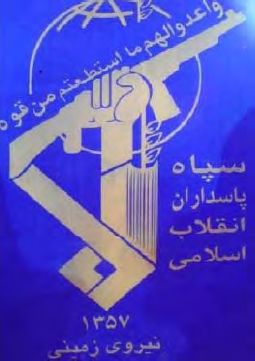
Above the rifle is a Qur’an quotation: “Against them make ready your strength to the utmost of your power…” (Surah 8, An-Anfal, Verse 60), a Muslim call to prepare a military force to wage war against an enemy.
The Ali Mussa Daqduq Affair
One instance of Hezbollah’s aid to Iraq was the affair of Ali Mussa Daqduq, a Lebanese Shi’ite who had been a top Hezbollah operative since 1983. Before coming to Iraq he was the head of Hezbollah’s special operations unit and commanded the organization’s operative activities in Lebanon. In May 2006 Mussa Ali Daqduq was briefed by the Hezbollah leadership. His mission was to go to Iran to collaborate with the Qods Force in training pro-Iranian Shi’ite operatives in Iraq.
In May 2006 Hezbollah sent Ali Daqduq to Tehran accompanied by Yusuf Hashem, a high-ranking Hezbollah operative responsible for operations in Iraq. In Iran the two met with IRGC-QF commander Brigadier-General Qassem Suleimani and his deputy.[36] Ali Daqduq’s activity centered on training groups of 20 to 60 new recruits in the use of explosively formed projectiles (EFPs), firing rockets and mortars, sniping, and running intelligence and abduction operations.[37]
In addition to training Iraqi recruits in Iranian training camps, Ali Daqduq was sent by the Qods Force on operational missions in Iraq. On his return to Iran after the fourth mission, he was instructed by his Iranian handlers to establish “special groups” of Shi’ite operatives in Iraq based on the model of Hezbollah in Lebanon. According to a 2007 briefing given by Brigadier-General Kevin Bergner, United States Army spokesman in Iraq, Iran financed the special groups, giving them between $750,000 and $3 million every month. He said that Iran also trained them in the use of sophisticated roadside bombs (EFPs) which caused many casualties to the American and Iraqi forces.[38]
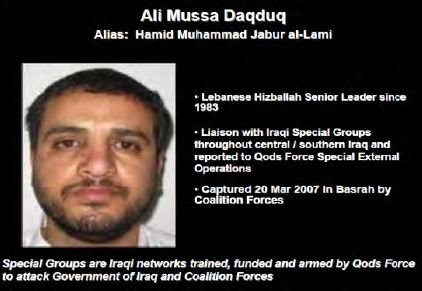
Ali Mussa Daqduq’s data as they appeared on the website of the American forces in Iraq (Picture from usf_iraq.com)
Ali Daqduq was a consultant to Qais al-Khazali, the leader of Union of the Sons of Truth, a Shi’ite militia directed by the Qods Force. He participated in the militia’s January 30, 2007 military operation against the Allied forces. According to the American forces, he was involved in an attack on the Karbala Joint Provincial Coordination Center (KJPCC), in which five American soldiers were abducted and murdered. American Army spokesman Kevin Bergner stated that American satellite photos revealed that the Iranians had constructed a mockup of the KJPCC facility where the Iraqi militia operatives in Iran trained for the attack. According to one report, the attack was planned by a senior Qods Force commander named Abdul Reza Shahlai, whose name was mentioned in connection with the attempted assassination of the Saudi ambassador in the United States.[39]
On March 20, 2007, Ali Daqduq was captured by the Coalition forces in Basra. In his possession was a large quantity of documents, one of them a 22- page training manual which dealt with planning attacks against American and Coalition forces. The documents dealt with placing IEDs, carrying out abductions and firing at helicopters.
Epilogue
The American forces put Daqduq under arrest. When the Unites States military presence in Iraq officially ended in late 2011, Ali Daqduq was handed over to the government of Iraq despite American concerns that he would be released to Iran. According to a United States administration official, the United States submitted a formal request to the Iraqi government to extradite Daqduq (Reuters, June 1, 2012), which Iraq rejected.
However, on November 16, 2012, Ali Daqduq was released by the Iraqi government and put on a flight to Beirut. According to his lawyer, he was released after an Iraqi court acquitted him of involvement in the killing of five American soldiers (Reuters, November 16, 2012).
To read the first part of the full study, go here: Hezbollah: Portrait of a Terrorist Organization
To read Appendix II, go here: Hezbollah’s Terrorist Activities during the 1990s
To read Appendix III, go here: Hezbollah’s Terrorist Activities during the 1980s
![]()
Notes:
[18] According to a report presented by Major General Yossi Baidatz, then head of the Analysis and Production Division of IDF Military Intelligence, to the Israeli Parliament’s (Knesset) Foreign Affairs and Security Committee, May 4, 2010.
[19] A Shi’ite village in south Lebanon.
[20] All Israeli cities, towns and villages are called “settlements in Palestine” by Nasrallah to express Hezbollah and Iranian denial of the legitimacy of their existence.
[21] For further information see the November 2006 ITIC bulletin “Hezbollah’s use of Lebanese civilians as human shields: the extensive military infrastructure positioned and hidden in populated areas. From within the Lebanese towns and villages deliberate rocket attacks were directed against civilian targets in Israel.”
[22] Data from the IDF Spokesman and Israeli National Insurance Institute.
[23] From a report issued in the summer of 2006 by the ministry of environmental protection (Environment.gov.il).
[24] Report by Major General Yossi Baidatz.
[25] One good example was the bloody riots in Beirut on May 7, 2008, during which at least 81 Lebanese were killed and 250 wounded. The pretext was the veto the Lebanese government imposed on Hezbollah’s private, Iranian-supported communications network. Another pretext was the removal from office of a high-ranking army office who supported Hezbollah, under whose aegis weapons were smuggled into Beirut when he was responsible for security at the Beirut airport. During the riots Hezbollah operatives took control of Beirut and other Lebanese cities, including Tripoli. Hezbollah’s violence forced the Lebanese government to surrender (May 14, 2008).
[26] Particularly prominent were the remarks of Samir Jaja, commander of the Lebanese forces, who accused Hezbollah of carrying out the assassination according to orders from Syria and Hezbollah. The reason, he said, was that Wissam al-Hassan had exposed the Michel Samaha affair (Nowlebanon website, October 15, 2012).
[27] One exception occurred in 1998 during the appeal of a Hezbollah operative named Hussein Mustafa Tlies, who admitted to killing the French military attaché in Lebanon. He also admitted his participation in planning the assassination of Camile Shamoun former Lebanese president and leader of the Christian camp (For details see below, Appendix III on Lebanon).
[28] Ababil is Farsi for “flock of birds.” The term appears in the Qur’an (Surat Al-Fil) as a demonstration of the mighty capabilities of Allah who sent large flocks of birds to drop rocks on his enemies.
[29] Hussein Anis Ayoub was from the village of Salaa in the Tyre region. He was formerly commander of Hezbollah’s aerial forces and is considered as having made a great contribution to Hezbollah’s aerial wing. He was involved in several showcase terrorist attacks against IDF forces in south Lebanon. He died at the age of 24 in a terrorist attack on March 4, 1996, when an IDF patrol jeep was hit by an IED in the Houleh-Markabeh region in the central sector of south Lebanon. In this attack, four IDF soldiers were killed during a chase in which an IED was activated against the Israeli force. Ayoub’s family joyfully received the news that sending the drone into Israeli territory was named after him and pictures of him were put up in the streets alongside Hezbollah flags (Al-Manar, October 13, 2012).
[30] For the past several months, the president of Lebanon, who was elected in May 2008 thanks to the support of Syria and Hezbollah, has been criticizing the issue of the weapons held by Hezbollah. For details, see the MEMRI report titled “E.B. Picali: Lebanese President Michel Suleiman Comes Out Against Hizbulla And Its Weapons” (October 22, 2012).
[31] This section is based on reports published on the ISA website (shabak.gov.il).
[32] This section is based on reports from the ISA website (shabak.gov.il) and the Israeli media.
[33] Source: Israel Security Agency, “Summary for 2007: Data and Trends of Palestinian Terrorism.”
[34] In his speech, Hassan Nasrallah admitted that he was indeed a Hezbollah operative involved in smuggling weapons and operatives to the Gaza Strip.
[35] The Egyptian intelligence services’ investigation showed that Hezbollah used the names of deceased Sunni Lebanese to forge passports for Hezbollah operatives (Al-Arab, April 22, 2009).
[36] From a briefing given by Brigadier-General Kevin Bergner, a spokesman for the multi-national forces in Iraq, on July 2, 2001 (longwarjournal.org) (hereinafter: Kevin Bergner).
[37] Kevin Bergner.
[38] Kevin Bergner.
[39] The Weekly Standard, October 12, 2011. In September 2008 the United States Treasury Department placed Shahlai on the worldwide list of terrorism. His name came up once again in 2011 as one of the people involved in the plot to assassinate the Saudi ambassador in Washington.



 RSS
RSS



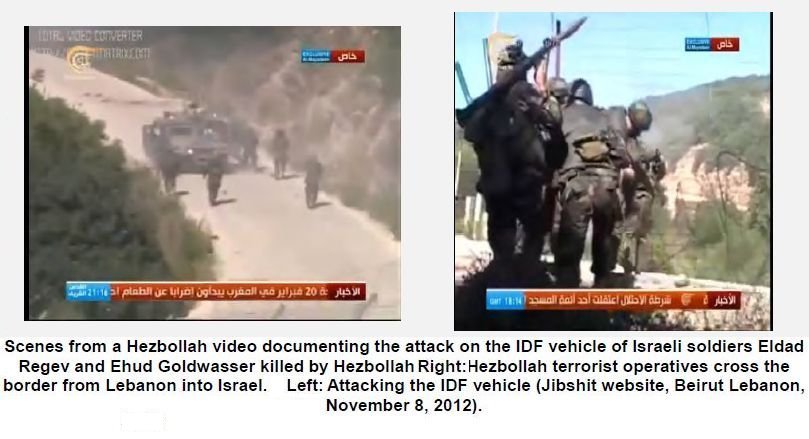

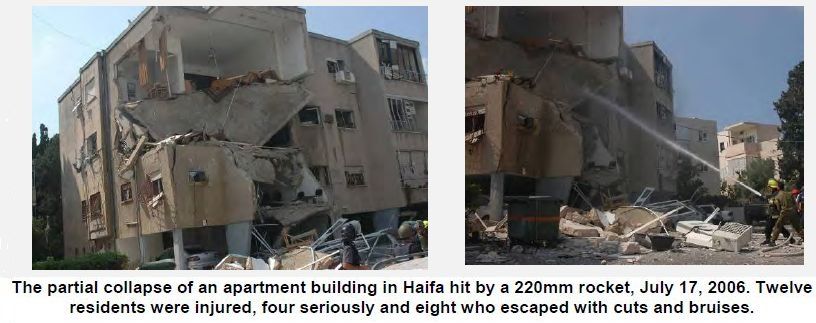
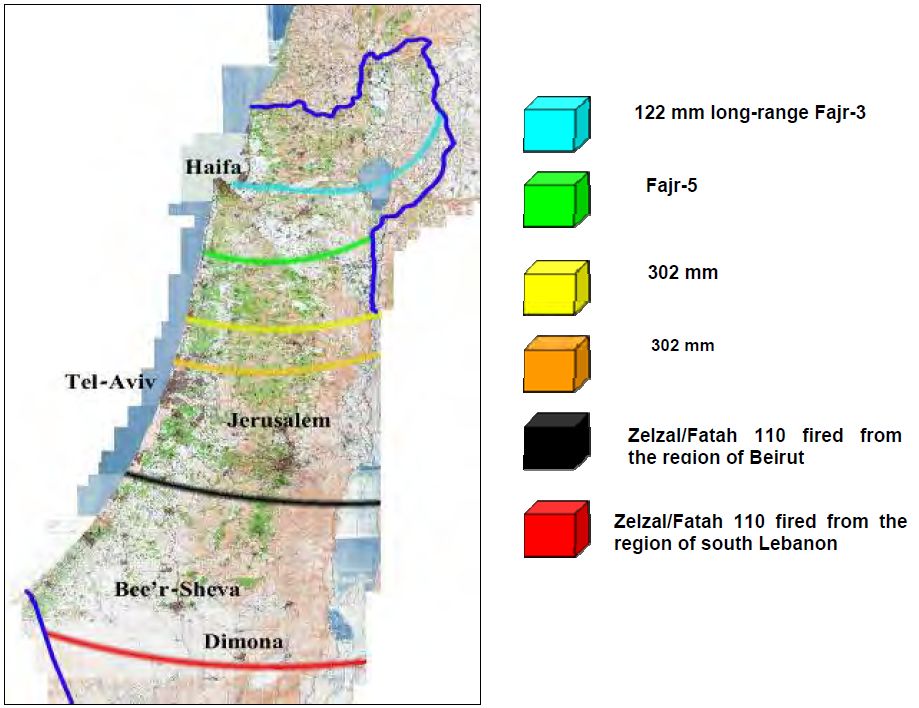

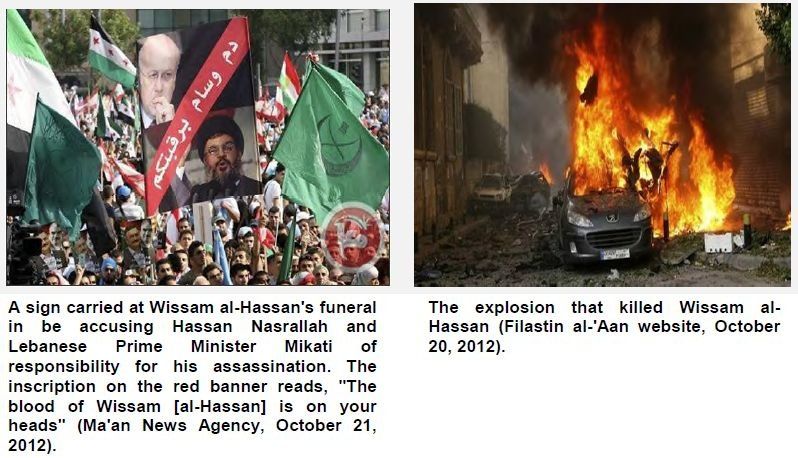
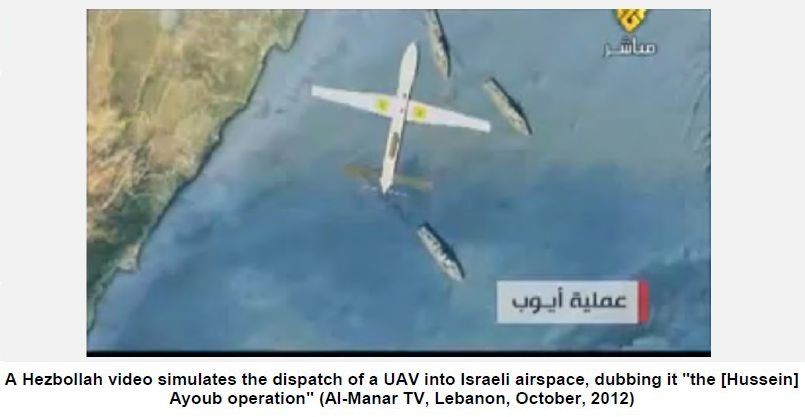
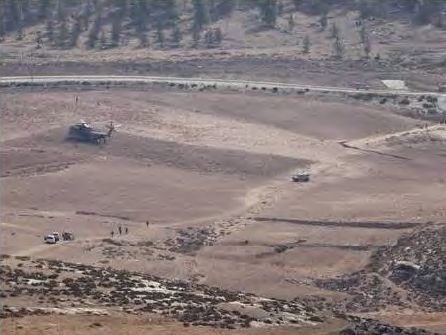






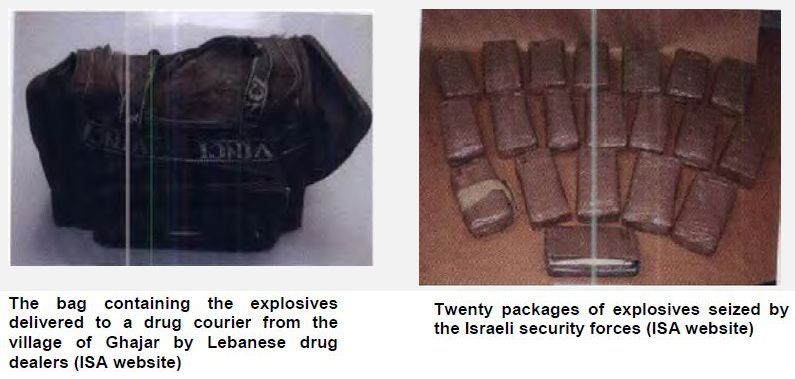
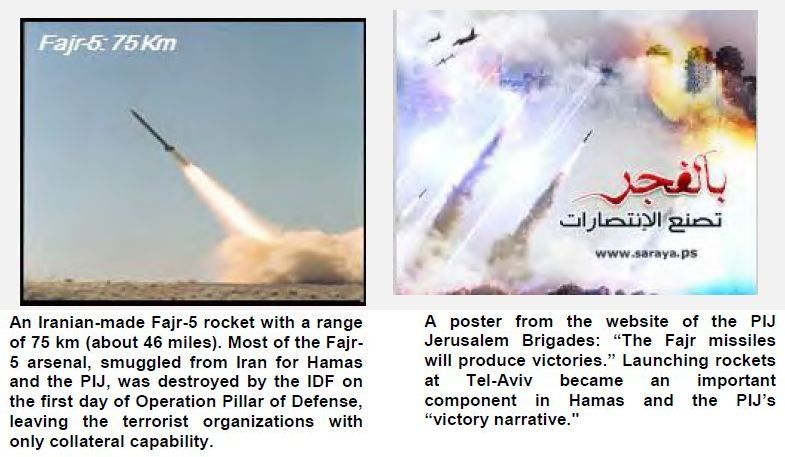
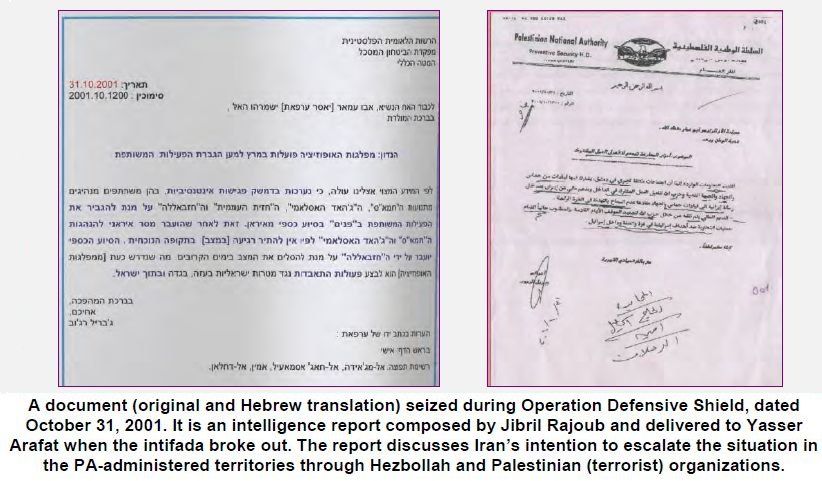

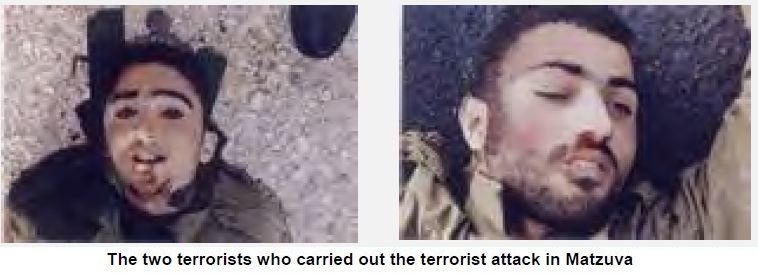
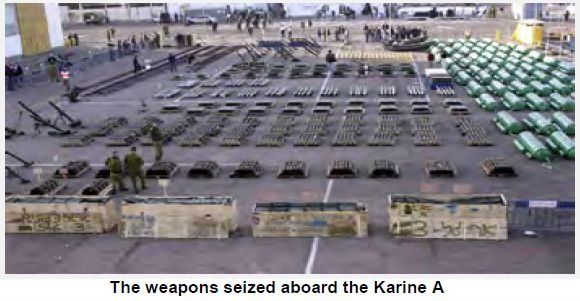
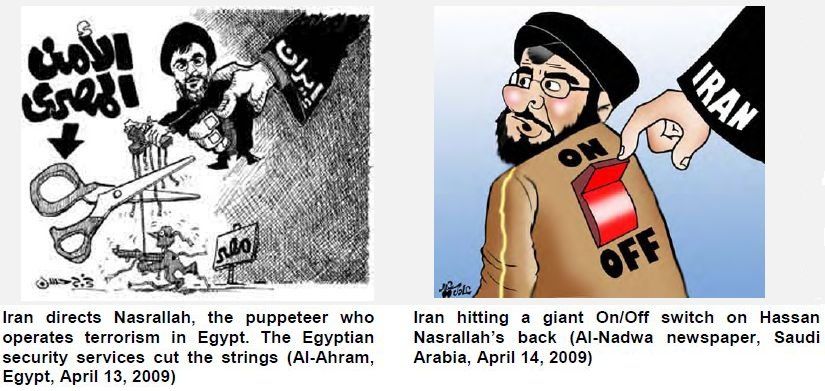
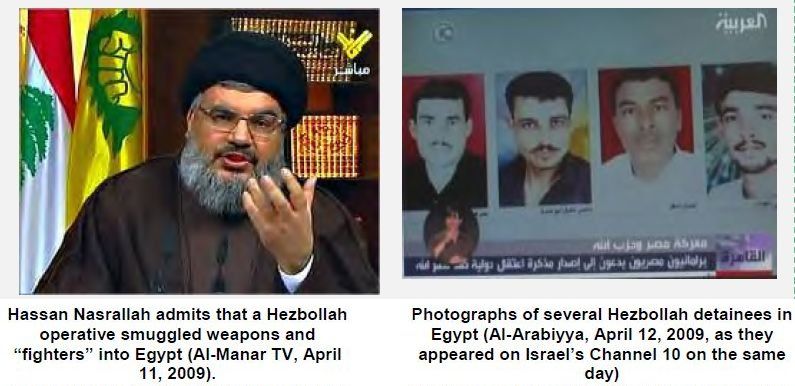
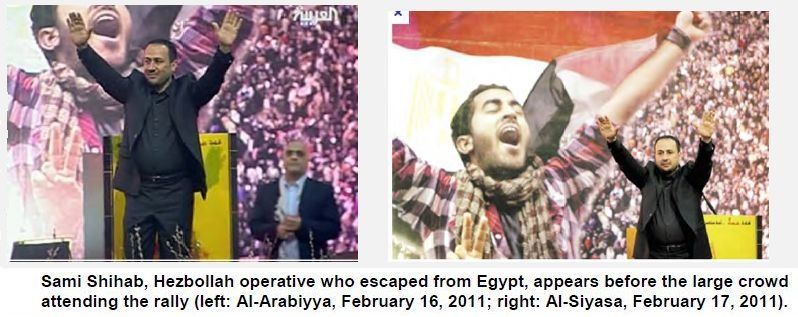
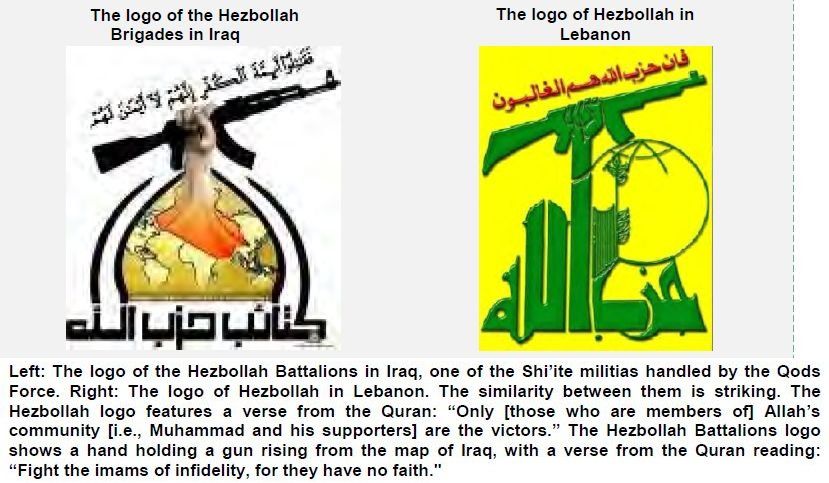
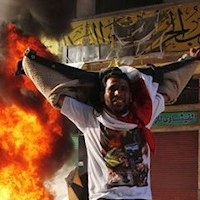
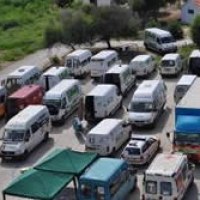

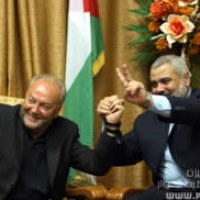
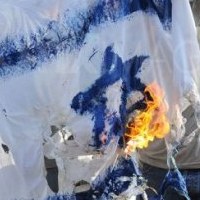











[…] To read Appendix I, go here: Hezbollah’s Terrorist Activity, 2000-2012 […]